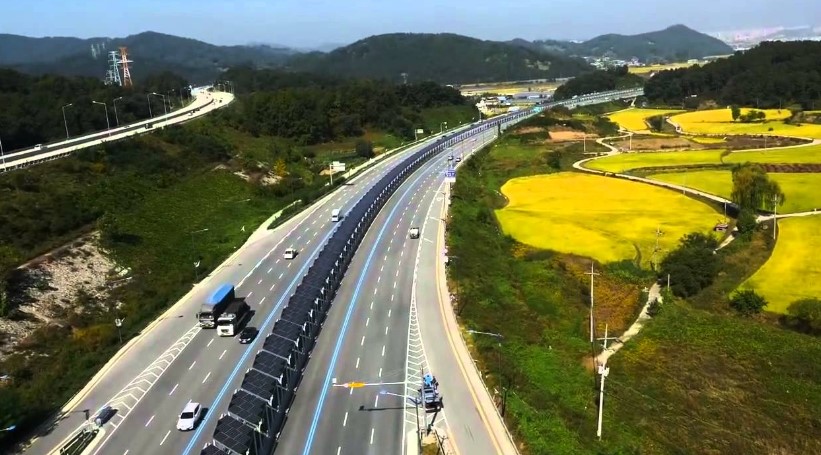The Daejon-Sejong Solar-Powered Bike Path in South Korea is a unique infrastructure project that features a 20-mile-long two-way bike lane in the median strip of the highway. The solar bike path is protected from the surrounding three lanes of traffic by side barriers, but the views may not be as scenic as some cyclists would prefer. Access to the bikeway is provided through underground tunnels, which are also equipped with solar panels that generate more than enough electricity to power the highway’s lighting system and provide charging points for electric cars.
While the Daejon-Sejong bike path is not the first solar road, it is the most extensive one to date. It surpasses the SolaRoad in the Netherlands, where a 230-foot stretch of road was replaced with solar panels at a cost of $3.75 million. The success of the Daejon-Sejong bike path could pave the way for the development of similar sustainable infrastructure projects in the future.
This innovative infrastructure project was built with the goal of promoting clean energy and sustainable transportation. The solar roof provides a source of renewable energy that can be used to power highway lighting and other systems. Additionally, the bike path provides a safe and convenient option for cyclists and supports active and sustainable modes of transportation. This project highlights South Korea’s commitment to sustainability and its efforts to lead the way in the development of cutting-edge infrastructure and technology.
Despite some limitations, the recent developments in solar-powered roads demonstrate the vast potential that our existing cement roadways have. In response to the pressing issue of pollution and a goal to achieve 1,300GW of solar energy capacity by 2050, China has built a 1-kilometer solar highway in Jinan, the capital of the Shandong province in the south of Beijing. This highway is capable of delivering 1GWh of energy to the grid each year, which is enough to power 800 homes. By harnessing the power of the sun, China is working towards reducing its carbon emissions and creating a cleaner energy future. Read More – A Comprehensive Guide to Buying the Right Electric Bike for Adults









